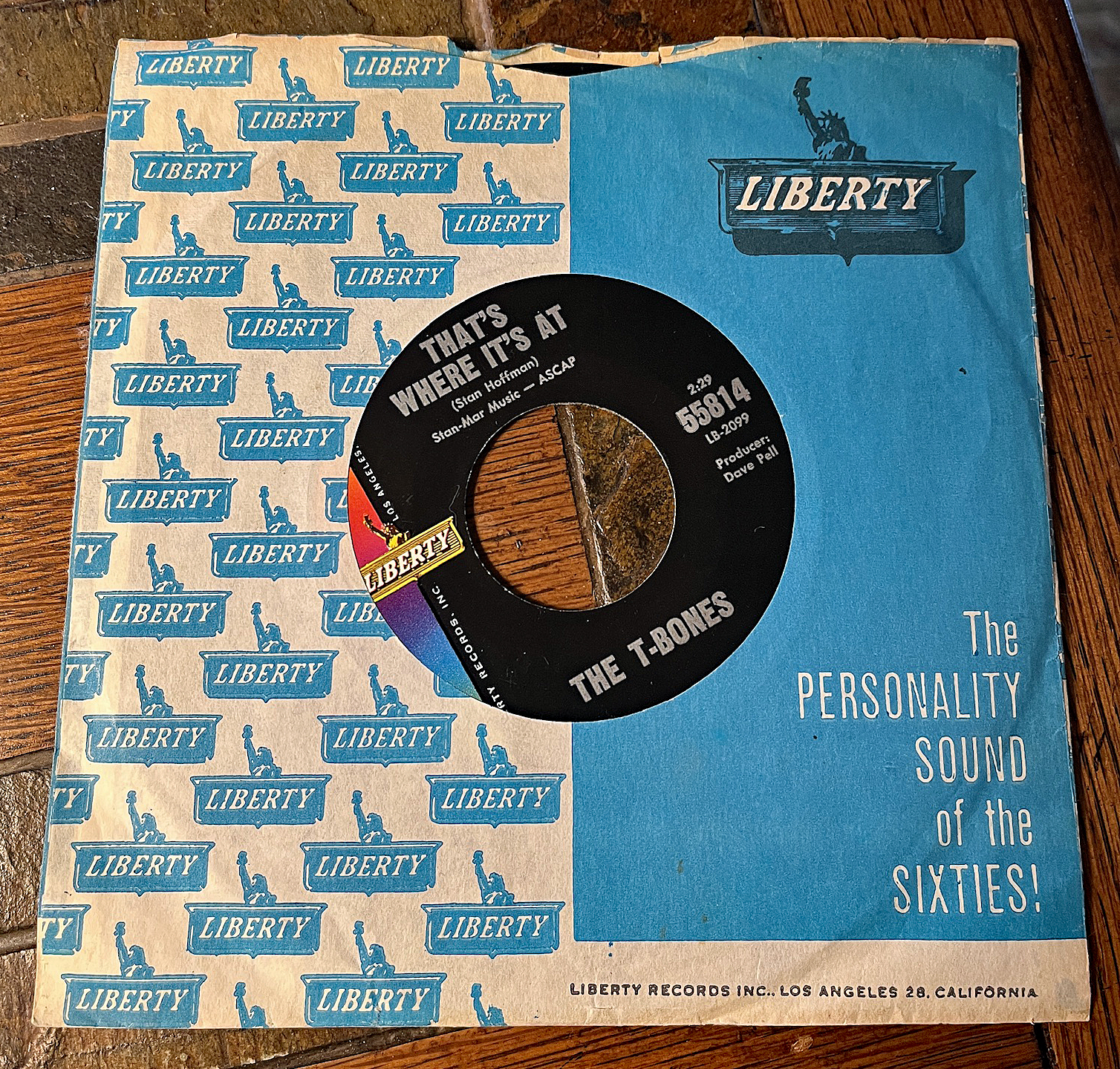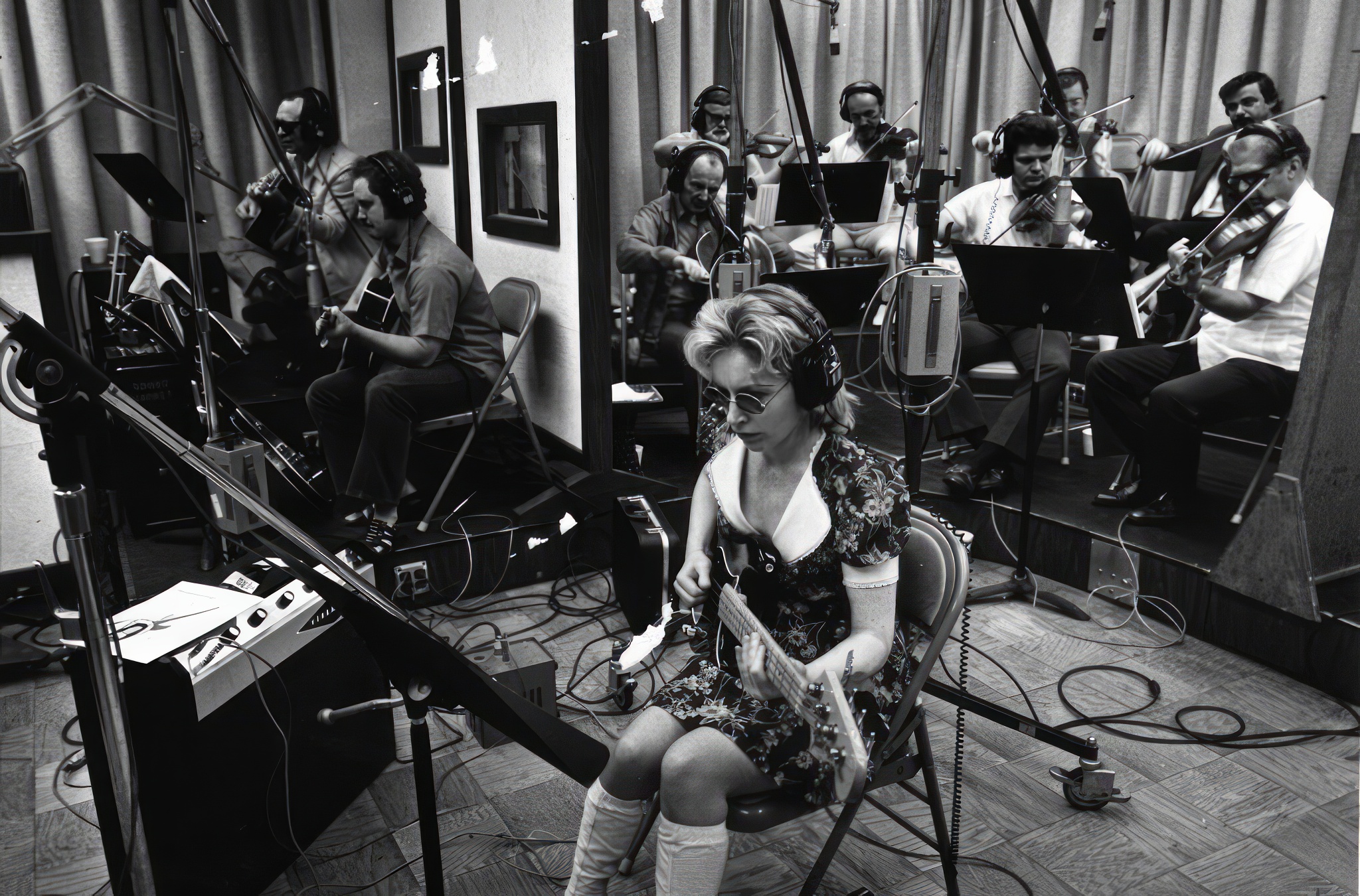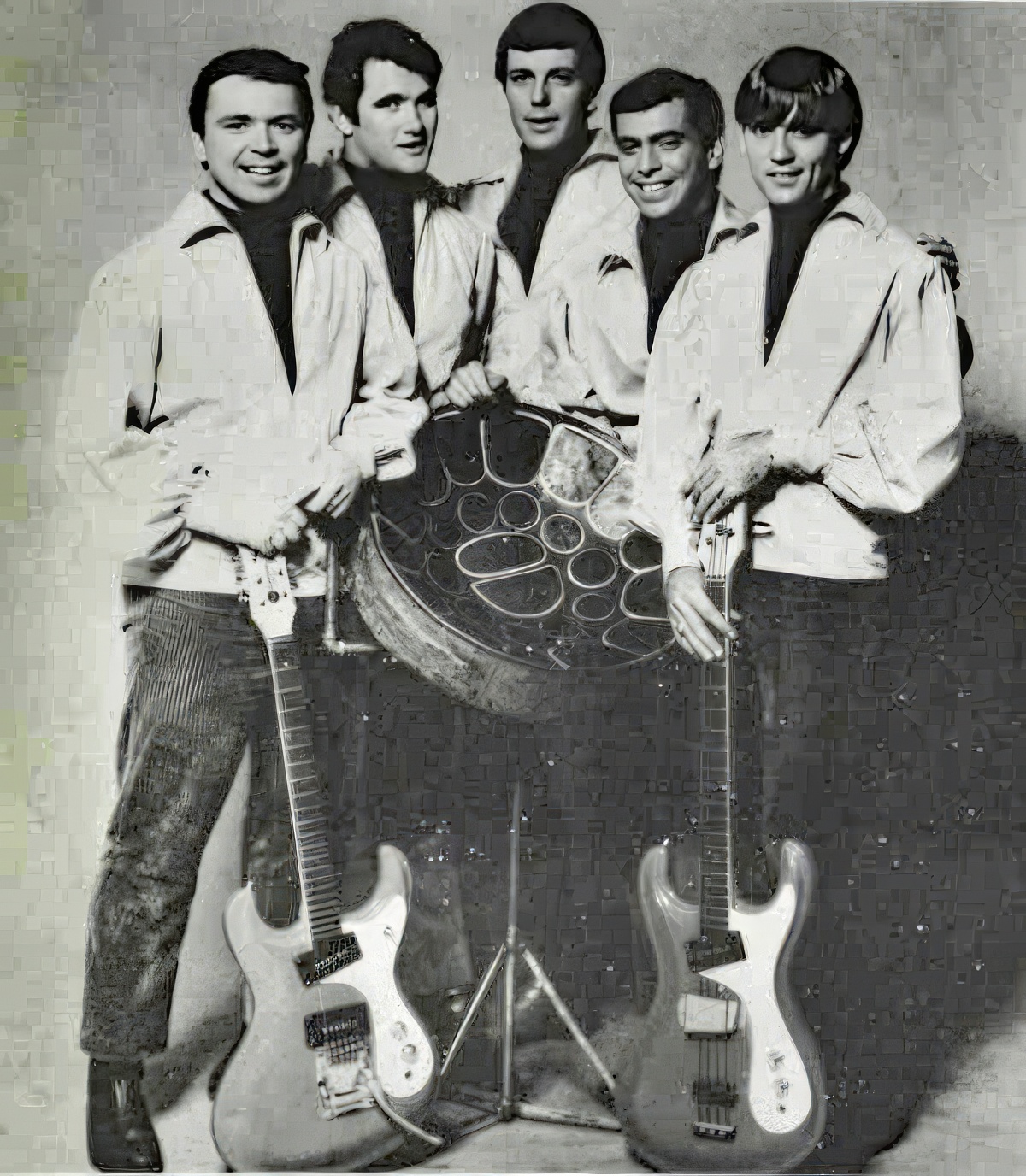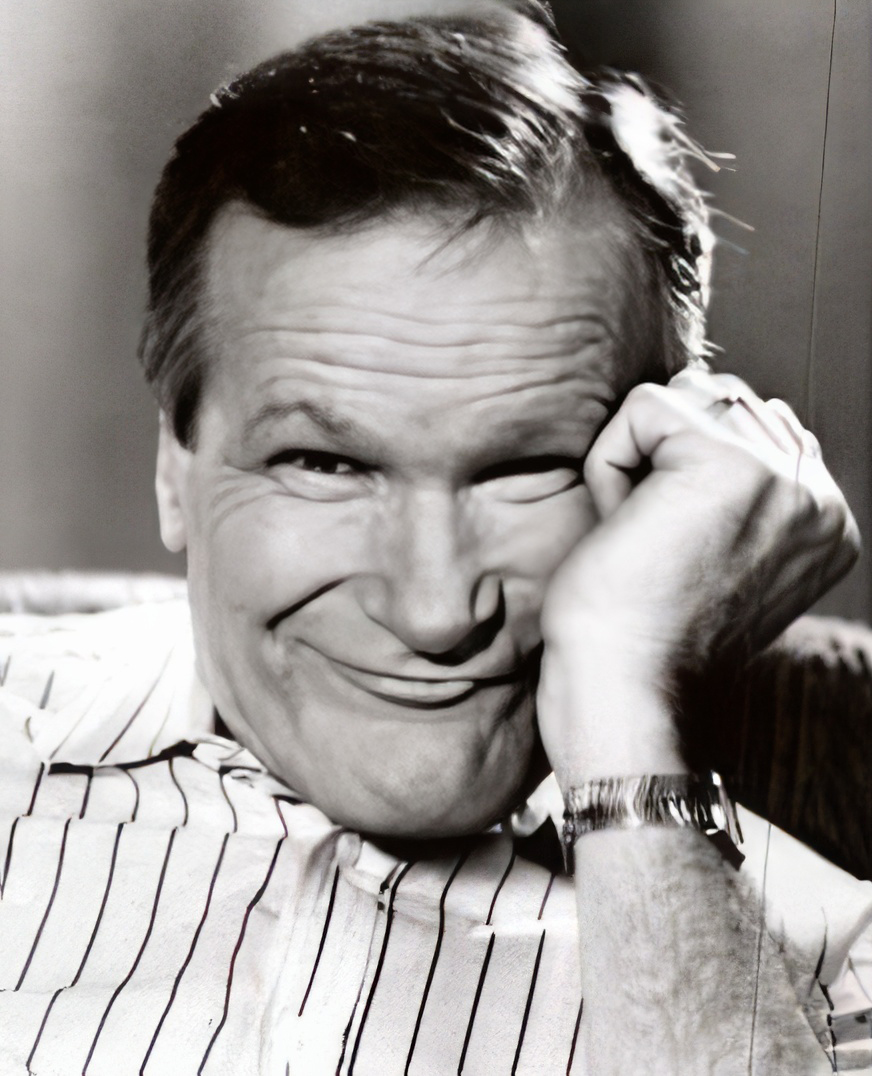KRLA and the Beat history
KRLA personalities
KRLA specialties
That's where it's at
When you went to your local record store in August 1965 to buy this single, were you disappointed to find out that it had been pulled from distribution? I was! You can hear the song on YouTube at the link above. It wasn't anywhere near a hit like the T-Bones' follow-up "No Matter What Shape (Your Stomach Is In)" but it has a charm all its own.
The promotional arm of the radio industry was strong. Songwriter Stan Hoffman and his partner Chuck "Color Radio" Blore turned the tune into KRLA's new jingles package in 1965. Here's the story. And scroll down to the end to hear the new jingles.
The T-Bones: first version

From 1963 onward the T-Bones were whomever Liberty Records decided they'd be. They were more or less a catch-all instrumental group assembled to perform covers of current hits of the day. Whether they were imitating the Ventures, the Beach Boys, the Rip Chords, dabbling in surf instrumentals or drag-race ditties they were professionals. Their goal was to assemble album-length collections that teenagers could buy for listening or dancing, cheaper options than buying original releases.
The Wrecking Crew

Most of these musicians came from the session group known nowadays as The Wrecking Crew (according to drummer Hal Blaine) but also The Clique (according to bassist Carol Kaye, pictured below with members of the group at Gold Star Studios in Hollywood) as well as The First Call Gang. You've heard their work on songs fromt he 1960s such as Herb Alpert's "The Lonely Bull" (1962), the Crystals' "Da Doo Ron Ron," Jan & Dean's "Surf City" (1963), The Righteous Brothers' "You've Lost That Lovin' Feeling" (1964), the Byrds' "Mr. Tambourine Man" (1965) and a host of other songs.
In the earliest permutation of the T-Bones in 1963, members included musician/producer Dave Pell, Tommy Tedesco, Glen Campbell, Hal Blaine, Carol Kaye, Ray Pohlman, Joe Saraceno, among others. Two of those members -- Blaine and Pohlman -- had also been recruited to play for The Marketts, another instrumental group with hits earlier in the decade, including "Surfer Stomp" (1961), "Balboa Blue" (1962), and their only number-one hit "Outer Limits" (1963), later renamed "Out of Limits" after a dispute with ABC Television over its science-fiction show.
The Marketts also included brothers Danny and Judd Hamilton on guitar as well as Gene Pello on drums. Those three would find their way to the T-Bones lineup when Liberty Records found itself with a hit record on their hands and needed a band willing to tour and promote the song. A side note for the future: the Hamilton brothers plus Joe Frank Carollo and sometimes-T-Bones member Tommy Reynolds became the 1970s soft-rock combo Hamilton, Joe Frank & Reynolds. But that's not important right now.
The T-Bones' big hit wasn't "That's Where It's At," but rather a novelty tune adapted from an Alka-Seltzer commercial, of all places. "No Matter What Shape (Your Stomach Is in)" was released in December 1965 and quickly gathered steam, reaching number 3 on the Billboard charts. Thus Liberty needed the band to go out touring to promote the single. The problem: members of the Wrecking Crew liked their day jobs in the studio and didn't want to go on tour.
The T-Bones: second version

Enter the new T-Bones. Neatly packaged for visual display and live-performance capabilities, Liberty assembled the Hamilton brothers, drummer Gene Pello, George Dee on bass and lead guitar, and keyboardist Richard Torres, who was also adept at clarinet and saxophone. The KRLA Beat was kind enough to feature an article about the group in its February 12, 1966 issue without any mention of the group's existence prior to their number-3 hit record. And that's odd considering that it was an earlier T-Bones song that had provided new radio jingles for KRLA.
Forward into the past: Chuck "Color Radio" Blore

1958 KRLA was just a gleam in the Cooke Brothers' eyes when Chuck Blore, program director at rival station KFWB, splashed across the Los Angeles airwaves with his spectrum of pop music, rock and roll, and fast-talking disc-jockey staff. KFWB was the only one of its kind in the Los Angeles radio market at the time where mainstream middle-of-the-road music and variety programs were the norm.
The Canadian-born Cookes envisioned a transformation at 1110 on the AM dial: western-swing KXLA could become KRLA, Radio Los Angeles, and give KFWB a run for its money. So it came to pass, not without a few bumps in the road as KRLA discovered that you couldn't create fake station logs or promotional games than couldn't be won. The FCC was not amused and during the first half of the 1960s KRLA flaunted its status as the number-two rock and roll station in Southern California with its own jaunty jingles sung by the Jud Conlon Singers. But by late 1965 it was time for a change.
Ignoring its legal woes, KRLA had actually pulled ahead of KFWB in radio ratings and could rightly call itself the number-one top 40 station in Southern California. This status, plus a shift toward an all-request music format, required a new on-air image. New station IDs and jingles were part of an early clue to the new direction and someone -- possibly KRLA program director Mel Hall -- sought an expert. Who better than radio promoter Chuck Blore? Blore had engineered KFWB's "Color Radio" top-40 format (described as a reference to the development of color TV) and was also known for his production of captivating jingle packages for radio stations across the U.S.

Blore had also dabbled in songwriting with his partner Stan Hoffman, whose Stan-Mar music publishing corporation was located on North Argyle in Hollywood. Hoffman had just penned a new tune, sax and brass featured prominently, with a group called the T-Bones, made up of various members of The Wrecking Crew. Released by Liberty Records #55814, the record (backed with a previously recorded track called "Pearlin'") was nestled neatly among such releases as the Bobby Fuller Four's "Let Her Dance," Martin Denny's "Hawaiian Village," and Gary Lewis & The Playboys' "Everybody Loves A Clown." August 1965 was an auspicious month for the T-Bones' new single.
But interestingly "That's Where It's At," the T-Bones' newest release, didn't chart anywhere other than the KRLA Tunedex for August 21, 1965. That was the first and last time it made an impact on the airwaves. Whether or not the record ever made it to record stores is another issue. It may have done, but it's obvious that the record was a real release whether or not it ever reached record sellers. While rare, copies sell on eBay. They exist!
KRLA's new jingles
What happened next? Within days of its release "That's Where It's At" was pulled from distribution, but the wheels were turning at Chuck Blore's Creative Services studios. A new set of KRLA jingles were in the works. Adapting the bright and jaunty four-note theme of the song, KRLA's new theme music was reconfigured to create top of the hour jingles as well as news, "datebook" (calendar), and "encore" double play intros.
Always a multitasker, Blore also configured the same jingles for WCFL radio in Chicago where he was consulting. A four-syllable jingle worked well with "KRLA" but not so well with a six-syllable call sign like "WCFL." Still, a person's got to make a living. Blore was double-dipping and both stations were happy.
Want to hear the results? Here it is. Thanks to Radio Jingles Online for the opportunity to share this package.